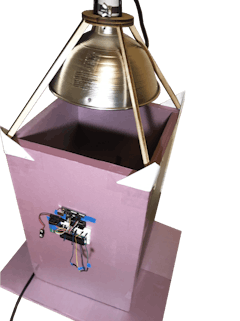
Specifying Electrochromic Glass
Electrochromic (EC) glass is a seemingly magical solution to a building’s sun shading problems. A technology that was originally developed about

Electrochromic (EC) glass is a seemingly magical solution to a building’s sun shading problems. A technology that was originally developed about

Urban noise pollution is a major environmental health problem. International organizations are making efforts to prevent health damage due to high

Advanced fabrication processes combined with parametric 3D modeling give designers and architects the freedom and versatility to push the boundaries

In order to reduce energy consumption throughout the whole life-cycle of buildings and increase the comfort performance of building sectors, an


The SCALP device is designed to measure the residual compressive surface stress of glass. As the SCALP does not rely on the birefringence properties

This year's World Congress was presented online through a virtual platform providing a unique forum for a diverse cross section of the design and real estate communities to discuss the innovations and advancements revolutionizing the design and delivery of the building skin.

Daylighting is often an important component of architectural design and heavily influenced by a building’s facade and enclosure systems. Unlike many

New approaches to lightweight metal forming have the potential to advance architectural fabrication, particularly in the design and engineering of

Manufactured veneer panels such as glass fiber reinforced concrete (GFRC), ultra high performance concrete (UHPC), sintered stone, and terracotta are

As the first phase of a $4 billion dollar, 180-acre, 60 building government preservation project in Washington DC, this case study reviews the

Green Wall applications are growing in popularity around the world. Often thought of as a decorative element they provide much more than aesthetic

Silicone materials have a long history in high performance building projects. Known for durability, they can reduce a building’s carbon footprint by

This article discusses design, prototype development and a simulation study of novel types of facade systems, which integrate thermoelectric (TE)

Until recently, Google has occupied buildings that were designed for others and modified the interiors to suit its needs. Many of the improvements

Contemporary building practice represents a disconnect between traditional manufacturing techniques, that favor straight runs and orthogonal

ASTM E 1300 Standard Practice for Determining Load Resistance (LR) of Glass in Buildings defines the load resistance of a glass construction as being

What was once an accepted reality in heat-treated exterior glass, optical disturbances in glass are under increasing scrutiny by developers,

The global increase in atmospheric temperature rise combined with the rapid growth of previously underdeveloped climate zones presents a growing need

Fidelity between the built enclosure and early visualizations is rarely, if ever, an accident. When achieved, it comes as the result of persistent


